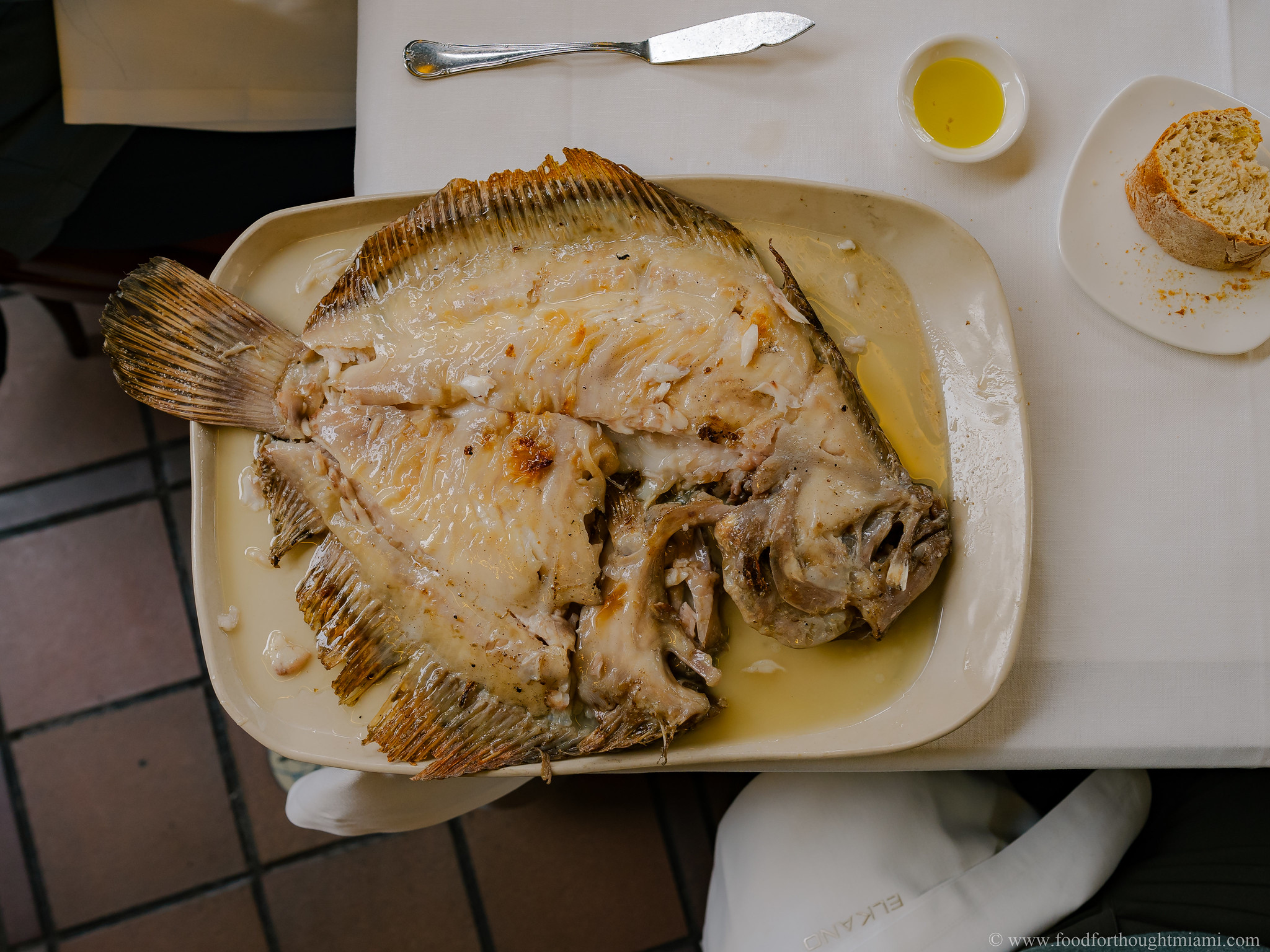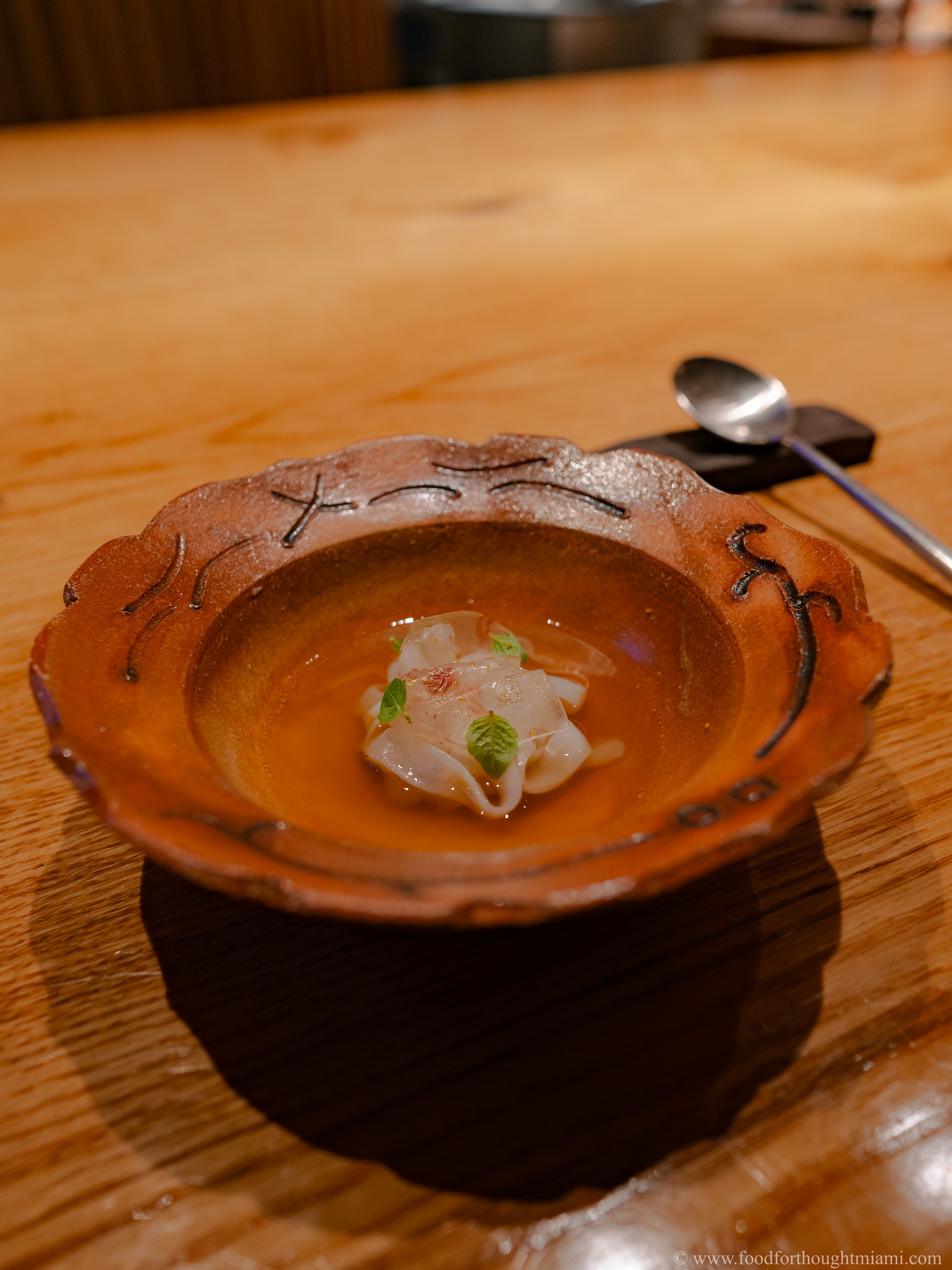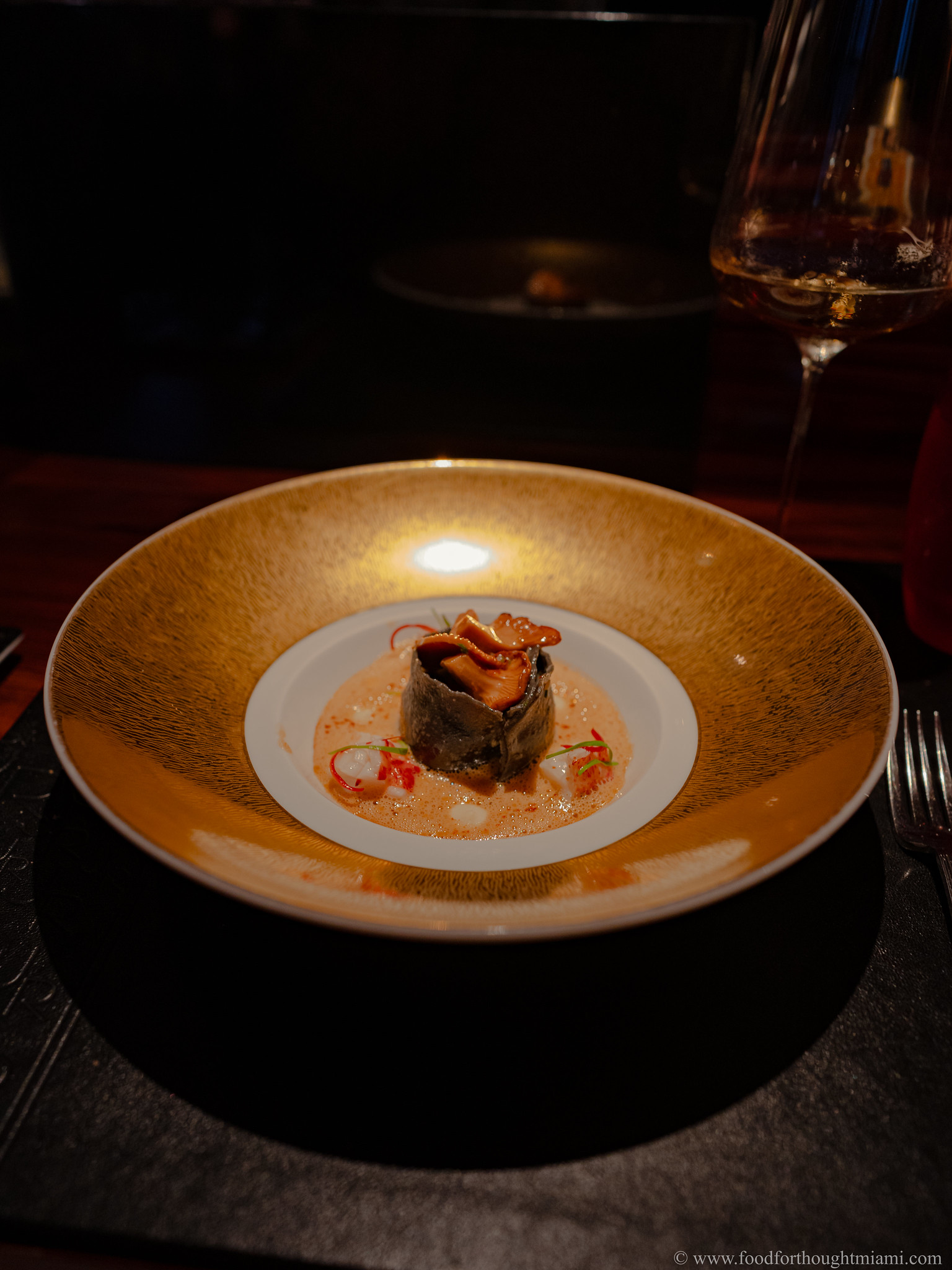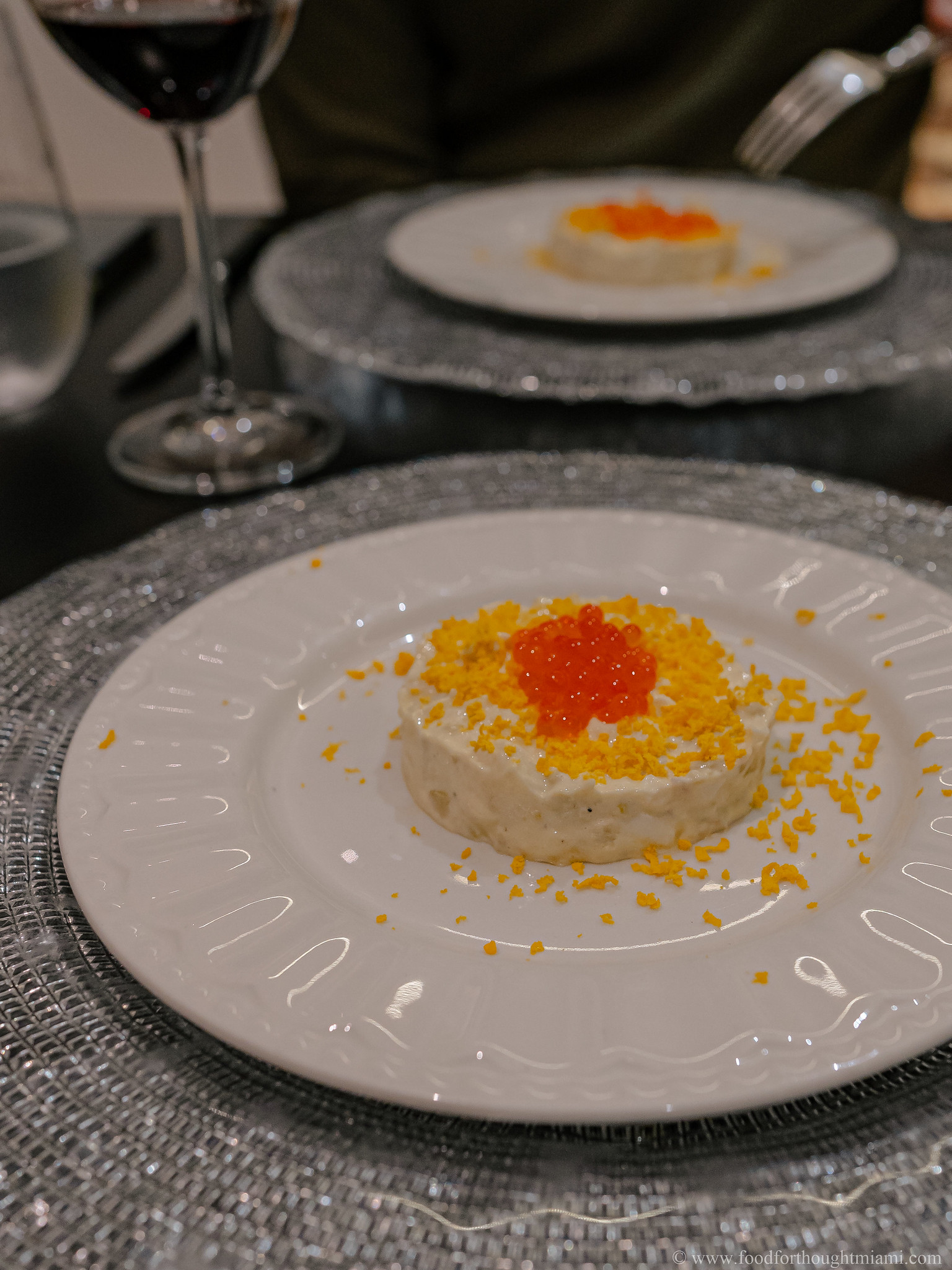February isn't too late for "year in review" posts, is it? Not too late for me, anyway.
Round 1 of my favorite dishes of 2023 actually made it up within a week of the new year. This sequel has experienced some delays, but is now resuming regular service. In the first post, we ventured through Oakland, Scotland, London, Lisbon and Marrakech before finding our way back home. Here, we pick up where we left off back in Miami – with one of my favorite new local restaurants.
 |
| bluefin tuna tiradito - Maty's (Midtown Miami) |
How gratifying was it to see a huge picture of this beautiful dish splashed across the landing page of New York Times' list of "
America's Best Restaurants 2023"? This was the year the national media really caught wind of the great things the Chang Gang are doing down here, as I noted in
Round 1 while singing the praises of Nando's spot,
Itamae. It took me a few months after it opened to get to sister Val's new restaurant,
Maty's, but by the time I visited it was absolutely firing on all cylinders. While Itamae skews more towards the Japanese influences on Peruvian cuisine, Maty's sticks with a more "traditional" repertoire - cebiches, tiraditos, jaleas and saltados feature prominently, but done in a finessed and contemporary way.
 |
| scallop cebiche - Maty's (Midtown Miami) |
Pretty much every dish felt like a highlight, but I was especially fond of that tiradito which made the NYT cover, of bluefin tuna in an aji limo leche de tigre with canary beans for some earthy grounding and beads of finger lime to provide a little extra acidic pop. Also, this cebiche of delicate scallops in a scotch bonnet leche de tigre with cilantro oil and coins of slivered grapes for a sweet-sour contrast. Great ingredients, lots of legumes and vegetables, and bright flavors that almost ripple with electric energy. This was one of the most exciting, invigorating meals I've had in a while.
Over the summer, chef Juan Garrido was popping up Mondays and Tuesdays at
Tropezon on Española Way with a pintxos-themed menu called "
Bar Gilda". The rotation would change a bit from week to week, featuring staples like the namesake
gilda,
[1] tortilla española,
patatas bravas, and
bocatas de calamares, with occasional detours. I thoroughly enjoyed every single bite – especially these delightful toasts of Cantabrian anchovies, fancy butter, and a sharp, fresh parsley-garlic dressing, mounted over crisp puff-pastry crackers. A classic combination, and an ode to really good ingredients. Having now recalibrated my pintxos-meter with a visit to the motherland later in the year, I can say that this as close to a real-deal Basque pintxos bar as I've experienced in Miami.
It had been a minute since I'd last visited
L'Atelier, the Joel Robuchon outpost in the Design District, and the only Florida restaurant which has been bestowed two stars in the Michelin Guide. The design of the Atelier restaurants is consistent throughout their locations around the globe, and for me anyway, there's still something slightly surreal about encountering the distinctive shining black, red, polished wood and gleaming chrome dining room and open kitchen here in Miami. There are a few ways to experience the Miami L'Atelier – the "Evolution" tasting menu, a shorter seasonal menu with a couple options for each round, some classic "specialties" that can be added on, and even a straight a la carte menu on weekdays. From an early fall seasonal menu, my favorite dish was this spiral agnolotti with lobster and chanterelle mushrooms, swimming in a rich, powerful lobster bisque.
Comparing the ratings of the Ateliers around the world is a curious exercise. The "flagship" Atelier in St. Germain, Paris has one star, as does a second location in Etoile, Paris as well as the Tokyo outpost. Meanwhile, the Miami Atelier has two stars, as do the ones in Geneva and Taipei. The Atelier in Hong Kong has three stars! The ones in London, Madrid and Dubai have none. What does it all mean? That you can get a better meal at an Atelier in Hong Kong or Miami than at one in Paris? That Michelin is grading on a curve when it awards stars in different cities? That maybe the stars are kind of arbitrary? Inquiring minds want to know!
Miami has seen a boom in high-priced omakase venues over the past few years, and I am far from convinced that they all are capable of delivering on their sometimes vertigo-inducing tariffs.
[2] So I approached
Mila Omakase with a healthy degree of skepticism. Also, Mila, the main restaurant in which it makes its home, seems like a douchebag magnet? But after clearing our way past the hostess stand and entering the insulated inner sanctum of the omakase room, where a
cherry blossom tree overhangs the sushi counter, I was very pleasantly surprised. Chef Reiji Yoshizawa and his crew show some solid technique and use some very good ingredients, but what I was particularly enamored of were the occasional flashes of Filipino flavors that appear here and there (Chef Yoshizawa grew up in Manila). It showed up in one of the opening bites, a
canape with creamy kinilaw flavors in a crispy round shell. And it came around again with a nigiri of lightly torched akamutsu
[3] topped with a daub of buro, a rich, funky fermented shrimp and rice paste, which nicely complemented the pleasingly fatty fish.
 |
| spiny lobster chawanmushi - EntreNos (Miami Shores) |
Maybe the most exciting newcomer of the year for me is
EntreNos, an extended pop-up at
Tinta y Cafe in Miami Shores by chefs Evan Burgess and Osmel Gonzalez. The two chefs both did time at Michael Beltran's
Ariete, and Evan's resume also includes Miami's late great Alter and Chicago's
Boka restaurant group, while Osmel spent time on the west coast as sous chef at one of my favorite places,
SingleThread in Healdsburg. Back home and together, they are focusing on local products through a short, tightly curated menu with a dedication and creativity I have rarely seen here. A
crudo uses blue runner, a dark-fleshed local fish in the jack family used more often as bait than as dinner, but which when sourced and handled well, as here, is deliciously rich and meaty. Accompaniments include a carambola vinaigrette, local leaves and blooms, and another thing I've never seen done with a local product — mango "olives" made by brining young, unripe mangoes.
Oysters from Sebastian Inlet are grilled and topped with brown butter chimichurri. Desserts include a
tomme cheese panna cotta topped with a sorbet of sea grapes, a ubiquitous but rarely used local product. I've had a couple different variations of their chawanmushi – one with smoked grouper, and another, pictured here, with spiny lobster. A creamy, frothy onion foam blankets the egg custard, hiding nuggets of savory confited potatoes underneath. This simultaneously triggers memories of seafood chowder (lobster / cream / potato), tortilla española (egg / onion / potato), and maybe even carbonara with the smoked grouper version (smoked fish playing the role of bacon). Regardless of what associations you may draw, it is flat out delicious.
(continued ...)
Chef-owner Juancho Lopez Bedmar has been running
La Tasquita de Enfrente in Madrid for around 25 years, following his father into the restaurant business and now bringing his son Nacho in for the next generation. The food at Tasquita is traditional Spanish, though not in a way that's stodgy or hidebound. But when someone at the table asks if we should order the ensaladilla rusa, and the waiter says "Well we've been making it for two decades, we think we've gotten pretty good" – that's truth. It might be kind of weird to be so enamored by what is, basically, potato salad, but I absolutely love this dish, and this was very possibly the best rendition of it I've ever tasted. Callos, the traditional Spanish tripe stew, is another of my favorite dishes. Tasquita's version, dubbed "Callos Gaona" (Juancho's father's nickname), was also one of the best versions I've eaten, the tripe silky and tender, the sauce spicy and so rich as to be almost sticky. This was so good it almost made a couple tripe converts at the table. I didn't need to be converted, I'm already a tripe believer, but this is the kind of dish that rewards such faith.
(
More pics from Tasquita de Enfrente)
 |
| erizo con guisantes y caviar - Estimar (Madrid Spain) |
Despite being landlocked in the center of Spain, Madrid gets some of the best seafood in the country (and, it could probably be fairly said, the world). Chef Rafa Zafra is a veteran of the Adria's El Bulli, and in 2015 opened
Estimar, which is something of a tribute to the seafood restaurants around Roses, Spain where El Bulli resided. The menu features a collection of many of the best things from the Spanish coasts –
Cantabrian anchovies,
percebes (gooseneck barnacles) from Roncudo,
gambas from Roses. gorgeous grilled fish like this
virrey (a/k/a alfonsino, of the same family as the Japanese kinmedai). The regular menu is supplemented with a list of indulgent seasonal specialties, which on our visit included this fresh sea urchin paired with guisantes (teardrop peas), caviar and a runny egg yolk. A great dish, and our whole meal at Estimar was a great experience.
(
More pics from Estimar)
I didn’t know quite what to expect when I planned a stopover in Burgos on the way to Rioja. I was pleasantly surprised in every respect. The town is completely charming, with a huge, ornate cathedral and a fascinating Museum of Human Evolution (some of the oldest human remains in Europe were found nearby in Atapuerca). Our hotel, the Landa, was a stunner, built into an old castle. And our dinner at
Cobo Estratos was one of the best of our trip. In a
dramatic multi-level space, chef Miguel Cobo actually runs two restaurants in one:
Cobo Tradición has a more customary format and menu, while
Cobo Evolución offers a tasting menu with an evolutionary theme (which now, having visited its home, makes a lot more sense). We’d reserved Tradición – which still showed some contemporary touches to dishes rooted in old-school Spanish cuisine, all very well done.
Burgos is famous for its
morcilla, and deservedly so – Cobo's was so good it won over some blood-sausage skeptics at our table. And everything else we had was also very good, including a silky
seasonal mushroom stew, and
arroz seco with sea bream and shrimp. But my favorite were these humble croquetas of Iberian cured meats and fresh cheese, very possibly the most perfect and delicious croquetas I've ever had (sorry, Michy).
 |
| rodaballo - Elkano (Getaria Spain) |
For a long time,
Elkano was something of an insiders' secret – a seafood specialist in Getaria, a town about a half-hour up the coast from San Sebastian, which grilled the world's best rodaballo (a/k/a turbot). It is a secret no longer, now a mandatory stop for many along the Basque Country's culinary camino. I don't claim to have tried them all, but I can say that Elkano's reputation is well earned – this was a great fish. The rodaballo is brought to the table whole from the grill, then portioned out for each diner to get some of the dark-skinned, thicker, upward-facing side of the flatfish, the white-skinned, downward-facing side, and the ribbon of fins around its edges.
[4] I often find white-fleshed fish bland and boring, but this turbot offers an incredible variety of rich textures – the white-skinned filet a bit more delicate than the dark, the fins incredibly sticky and gelatinous, with little nubbins of meat (what the Japanese call "engawa"), the skin fatty and rich. After the initial filleting, the server will come back to portion a second round. I opted for the DIY approach and excavated delicious, sticky morsels from the head, collar and fins until my dining companions lost all patience. This is a classic for a reason. And while everyone raves about the rodaballo, what does not get mentioned nearly as often is how excellent everything else is at Elkano as well, from a first bite of pristine pink raw
bonito, to the delicious
fresh cheese ice cream with a reduction of red fruits for dessert.
 |
| calamari noodles - Amelia (San Sebastian Spain) |
 |
| amberjack crudo - Amelia (San Sebastian Spain) |
 |
| rum ice cream, banana mole, caviar - Amelia (San Sebastian Spain) |
One of the drawbacks of the long-form tasting menus that have become de riguer at so many high-end restaurants these days is that – let's be honest – not every chef has twenty
great dishes in them. Even really good meals often have their ups and downs: dishes that miss the mark, or just aren't particularly memorable. Our meal with chef Paulo Airaudo at his restaurant
Amelia in San Sebastian was
not one of those meals. This was the rare kind of album where every tune is a banger.
It cracks me up a bit that we traveled all the way to San Sebastian to eat with an Argentine-Italian chef, when our little corner of Miami Beach has long been known as Little Buenos Aires. But Airaudo, who was born in Argentina to an Italian family, has absorbed plenty of Basque culture, having worked at
Arzak (along with other bigshot places like
The Fat Duck in England) before opening Amelia in 2017. It picked up a Michelin star in its first year, and added a second in 2021. His cooking style at Amelia looks in several directions at once, including Japan and Italy, but the ingredients are pretty strongly rooted in the Basque countryside and seas. It's a really interesting and pleasing combination. Among sixteen courses which all hit their marks, these were a few highlights.
Ribbons of calamari "noodles" swimming in a porcine broth, topped with sheets of translucent guanciale and flecks of freshly shaved yuzu zest. A very distant cousin of a carbonara. A crudo of lush amberjack, with fat slices of carabiniero shrimp and watermelon radish flowers, all bathing in a savory fermented kohlrabi broth. And an unexpectedly outstanding combination of rum ice cream, banana mole caramel, and very good caviar. It sounds ridiculous. It was the best dessert I had all year.
Chef Airaudo will be opening a restaurant in Miami sometime soon. I'm very much looking forward to that.
Chef Eneko Atxa's
Azurmendi is a special place. Situated in a
glass box nestled into green hills just outside the town of Larrabetzu, about a half-hour's drive from Bilbao, the restaurant is surrounded by its own vegetable gardens. Indoors and outdoors blend in the large
entry space, where tree trunks climb toward a glass ceiling and vines climb up the walls. The meal begins with a picnic basket – here, containing tiny brioche buns filled with veal tartare dressed in anchovy aioli, little piggy polvorones, a cup of densely flavored bean broth, and the highlight for all in our dining group, an exceptionally tasty mousse of foie gras topped with a lemongrass gelee and a garland of elderflowers, served inside a hollowed out citrus shell.
You proceed through a few more stops – into the kitchen for a course of
truffles and eggs, into a
garden room for a procession of treats – before settling in the
dining room. Every bit of the meal is pretty lovely, and picking a favorite is challenging. But I especially enjoyed this course of delicate, sweet quisquillas (small prawns), served raw in a juice of green herbs with a creamy shrimp head emulsion. A really beautiful product, beautifully presented.
[5]
 |
ricotta raviolo - Boia De (Buena Vista Miami)
|
We're generally not big on going out on New Year's Eve. Too many amateur hour diners, too many lame, overpriced fixed menus, too much enforced levity. A perfectly good NYE for me is buying as much caviar as I can afford at
Marky's and eating it with blini or potato chips on the couch at home. But when I saw a spot was open at
Boia De, that changed the usual calculus. Aside from being pretty close to home, Boia De kind of feels like home to us, even as it's become a Michelin-starred spot that's usually booked up months in advance. Our NYE dinner at the counter featured many nice things: an assortment of
canapes;
risotto with foie gras, wild mushrooms, an egg, and a generous shaving of fragrant white truffle; a
terrine of rabbit with black truffle jus and peppery mustard greens;
tortellini en brodo, the pasta filled with foie gras, the broth a duck consommé;
seared grouper on a sunchoke puree; their lovely
crispy tiramisu. But the best in show was this plump, lush raviolo filled with creamy ricotta and a golden egg yolk, swimming in sage-infused brown butter. This is the kind of thing that will get me out of the house even on New Year's Eve.
Every year, I try to express my gratitude for all the people – the chefs, cooks, servers, somms, bartenders, bussers, dishwashers, farmers, fishermen, and foragers – that make these moments of joy possible. Here's wishing them all the same wish my grandfather would make every year: "Always better, never worse."
_________________


















No comments:
Post a Comment